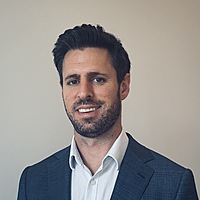Companies are staying private longer: How Ares says investors can benefit
This interview was filmed on 23 October 2025.
Publicly-traded companies have been the de rigueur method for investors looking to get exposure to the everyday economy for more than 100 years, but the growth of private equity options, including secondaries, has opened up a whole new world.
And it's an opportunity set that will likely continue to grow in the face of one of the more interesting trends in markets right now, says Barry Miller, partner in the Ares Secondaries Group.
"One thing that is interesting about the markets today is companies are staying private longer," says Miller. "The example I always like to give people: you look at the Wilshire 5,000, it's not 5,000 companies."
The private equity market has grown as a response, and this growth creates more opportunities for investors.
"As we look at the market in totality, companies will stay private longer. In many cases they may stay private in perpetuity. But what's interesting about it's, if we look at private equity just in general, this notion of private equity funds getting larger and more companies being sold to strategic buyers, there is a pool of capital that can support those. And I think it gives us a lot of additional runway as we look to the future."

The benefit of secondaries
Private equity secondaries, which is when existing private equity stakes are bought or sold, offer two key potential advantages - diversification and J-curve mitigation - according to Miller.
"One of the things that we always talk about is diversification. Diversification by sector, by stage, by vintage, by geography."
One of the key advantages to private equity secondaries is the sheer number of companies it offers access to. And that's a consideration that's central to Ares' strategy, and why one strategy is currently 95% allocated to secondaries.
"Diversification is paramount. And so as we think about building out the portfolio, we are less concerned about fund concentration. We are less concerned about sponsor or manager concentration, but we are laser focused on company concentration."
That same strategy has exposure to more than 7,500 companies, and tries to keep exposure to a single company below 3% of the net value of the strategy.
"The second part that we try to focus on is what's called is J-curve mitigation. So if you look at the traditional private equity fund - it could be a real estate fund, it could be a credit fund - generally they have a life of 10 years."
"In that life of 10 years, it takes five years to invest, five years to harvest. We look at year six to eight. After that investment period we can bring cashflow forward, enhance returns, and for many people it mitigates that period of time when you put that dollar in the fund and it's worth a little bit less."
Where they're investing
This strategy is primarily invested in the US market and looks to mirror the Russell 2000 Index, which tracks US small caps. It means financial services, tech and healthcare currently make up the majority of the strategy's sector weighting.
But Miller says the strategy is underweight two sectors compared to the Russell - energy and real estate - for two different reasons. On energy, it's simply the matter of a challenging secondaries market. On real estate, it comes from a desire from investors to diversify away from the sector.
"Many people have made their wealth in real estate and they're looking to diversify their way out of that," says Miller. "So as a result, they're looking for something that's complimentary. They're not really looking for more real estate."
Allaying the doubts
While many have voiced concerns around the potential for front-loaded returns in secondaries, Miller believes it simply reinforces the importance of finding the right manager.
"When you look at any investment, whether it's private equity, public equity or mutual fund. One thing I think that is paramount is the quality of the manager," he said. "So as an investor, look at strength, quality of the manager, depth and breadth of the team, the actual performance."
One thing that is undeniable is the significant growth of secondaries, says Miller.
"When you look over the last 15 years, what you'll see is transaction volume has doubled almost every five years. If you go back and project that out, we see a path to US$400-500 billion. So that's a little bit longer way of saying we believe it's here to stay."
3 topics

